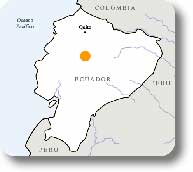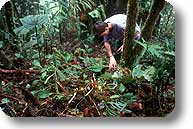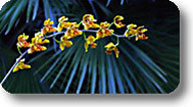
 |
Otonga Strict Nature Reserve |
Protected Area |
|
 |
|
|
|

|
Otonga Nature Reserve exists not thanks to legislative acts of safeguard, but thanks to the gradual acquisition of lots of forest areas by a Foundation established exactly for this purpose, FUNDACIÓN OTONGA, recognized through a ministerial decree of the Ecuadorian government. The permanent aim of the project is to raise funds for new territorial acquisitions; an excursus of the development stages of the area immediately highlights the deep link which has always existed with Italy. The first hundred hectares of wood were purchased in 1988 and their control was entrusted to the Tapia family: Don Cesar and his sons Italo, Elicio, and Arturo have dealt since the beginning with the protection of fauna and flora, also starting guided activities for visitors. During the years 1992/1993, the Reserve covered 650 hectares, purchased thanks to the donations mainly received by Prof. Mario Pavan and the Prize GAMBRINUS "GIUSEPPE MAZZOTTI" which opened a special subscription. At the end of 1997, thanks to the contribution of 20 million Euros coming from VALCUCINE in Pordenone, about 200 hectares of forest were purchased, linking the reserve to the state nature reserve "La Florestal" covering about 4,000 hectares, creating in this way a big green corridor. In February 1998, with the birth of BIOFOREST, supported in primis by VALCUCINE and then by other industries, Otonga, covering about 850 hectares, had to extend fast and further. Thanks to the new and significant financial resources, it was possible to develop a ten-year pilot project consisting of different measures and with various aims. In 1998, to the structure built at the moment of the purchase, another building was added to welcome about thirty people. Biologists and naturalists coming from all over the world had the opportunity to visit the Reserve, as well as different groups of university students from Quito, who had experiences in the field, learning to recognize the fauna and flora of Otonga. In 1999, next to this structure, a scientific station was built to promote the study of the flora and fauna of Otonga on the spot. In the surroundings, a big nursery with various native plants (twenty thousands), which have been already used to reforest some stretches within and at the edges of the Otonga Nature Reserve. With the help of some local young people, almost 35,000 small plants coming from seedbeds and nurseries have been planted. In order to give workers the opportunity to have accommodation on the spot, an old house belonging to the former owner has been readapted. With the last purchases, Otonga Forest covers now more than 1,000 hectares. Since 1999/2000, some scholarships have been given to some young university students from Ecuador, research activities and specific publications on Otonga Forest have been financed, accommodation and logistic structures within the Forest have been expanded and improved. |
The Collaboration Project of Ente Parchi Astigiani |
|
| Some years ago, Regione Piemonte started a decentralized cooperation program among the protected areas of Piedmont and the protected areas of some "Developing Countries"; within this project, interdisciplinary initiatives have been co-financed: from mere environmental safeguard activities to territorial enhancement measures aiming at promoting the economic, social, and cultural development, also through the exchange of competence and technical resources. Within this program, Parchi Astigiani carried out an articulated project with an Ecuadorian protected area, called "twinning project of Ente Parchi Astigiani with Otonga Strict Nature Reserve". Within the purchase program of forest areas for the FUNDACIÓN OTONGA (recognized by the local Department of the Environment through the Ministerial Decree 93 of 28-V-1998), the purchase of a 5-hectare woodland in location Narjito has been carried out. Giovanni Onore, born in Costigliole d’Asti, graduated in Agriculture and Marist Father, has been living in Quito for over twenty years, and teaches Entomology in the local Catholic University; during his stay in Ecuador, he has devoted himself to the conservation of the important forest of the Andes, which subsequently became "Riserva Integral de Bosque Nublado Otonga"; returning periodically to Asti, Father Onore has spread the project of safeguard of the Andes, promoting on the territory cooperation projects at various levels (Middle Schools, WWF, private citizens) aimed at raising funds to purchase new stretches of rainforest. |
|
Biodiversity |
|

|
Thanks to the contribution of researchers coming from different nations, there is an ongoing census regarding the animal and vegetal species of the Area; the Reserve is considered one of the most important protected areas of the Earth for the great biodiversity characterizing it. |
FaunaAt the moment, more than fifty species of mammals have been registered, among which the Pacarana or Branick's Rat (Dynomis branickii), an endangered species because of deforestation and hunting, the Central American Agoutis (Dasyprocta punctata), two porcupine species belonging to the genus Coendou, different species of raposa or fox (among which the so-called "egg eater"), the Rat Opossum Caenolestes sp. |
|
FloraThe variety of environments, always particularly rich in species, and the gradual annexation of new stretches of territory to the protected area, make rather difficult the task of updating of the check-list of the biocenosis species; recently, a new species of rodent has been found: it is under description. |